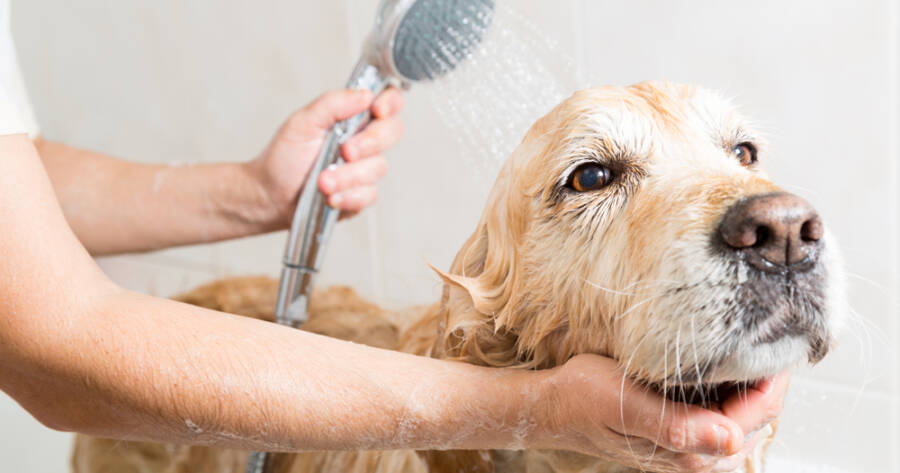Grooming is not just about keeping your pet looking good; it’s a vital part of their overall health and wellbeing. Regular grooming helps prevent skin issues, keeps the coat clean, and can even help you bond with your new furry friend.
Understanding Your Pet’s Grooming Needs
Each pet has unique grooming needs based on factors like breed, age, and health. For instance, long-haired breeds require more frequent brushing to prevent matting, while short-haired breeds may need less frequent but still regular grooming.1
It’s also important to get your pet accustomed to grooming from an early age. For specific grooming requirements for your pet’s breed, an online search can provide detailed information and recommendations.
Essential Grooming Tools
Having the right grooming tools is essential for effective pet care. Here are some basic tools you’ll need:
- Brushes and combs: Different types of brushes and combs cater to various coat types. Slicker brushes work well for long-haired pets to remove mats and tangles, while bristle brushes are suitable for short-haired breeds. Combs help with detangling and are useful for checking for fleas or ticks.
- Shampoo and conditioner: Use pet-specific shampoos and conditioners that are gentle on your pet’s skin. Avoid human shampoos, as they can disrupt the natural oils in your pet’s coat and cause skin irritation.
- Nail clippers: Regular nail trimming is crucial to prevent discomfort and potential health issues. Invest in quality nail clippers designed for pets and learn the proper technique to avoid cutting too close to the quick.
- Ear cleaner: Keep your pet’s ears clean to prevent infections. Use a vet-recommended ear cleaner and follow the instructions carefully to ensure you’re not causing any harm.
- Toothbrush and toothpaste: Dental hygiene is an important aspect of grooming. Use a toothbrush and toothpaste specifically designed for pets to help maintain their oral health.
Grooming Techniques and Best Practices
Proper grooming techniques ensure that your pet remains comfortable and that you achieve the best results. Here are some tips to follow:
- Brushing: Brush your pet’s coat regularly to remove loose hair, dirt, and debris. For long-haired pets, brushing should be done daily to prevent mats. Be gentle and use slow, steady strokes to avoid pulling on the hair.
- Bathing: How often you bathe your pet depends on their coat type and activity level. Most pets only need a bath every 4-6 weeks. Make sure to rinse thoroughly to remove all shampoo residues, which can cause skin irritation if left behind.
- Nail trimming: Trim your pet’s nails regularly to prevent them from becoming too long. The frequency will depend on your pet’s activity level and how quickly their nails grow. If you’re unsure about trimming nails, consult your vet or a professional groomer.
- Ear cleaning: Check your pet’s ears weekly for signs of dirt, wax buildup, or infection. Gently clean the outer part of the ear with a pet-safe ear cleaner. Avoid inserting anything into the ear canal.
- Dental care: Brush your pet’s teeth regularly to prevent plaque buildup and dental issues. Aim for brushing at least 2-3 times a week, and consider incorporating dental chews or toys into your pet’s routine.
Recognizing Signs of Health Issues
During grooming sessions, you have the opportunity to check for any signs of health issues that may need attention. Look out for the following:
- Skin issues: Check for redness, bumps, or abnormal lumps on your pet’s skin. These could be signs of allergies, infections, or parasites.
- Ear infections: Pay attention to any unusual smells, redness, or discharge from your pet’s ears. Ear infections can be painful and may require veterinary treatment.
- Dental problems: Look for signs of dental issues, such as bad breath, red or swollen gums, or difficulty eating. Regular dental checkups are important for preventing serious problems.
- Nail health: If you notice any nails that are splitting, cracking, or bleeding, it’s essential to address these issues promptly to prevent further complications.
Regular Grooming Routine
Establishing a regular grooming routine is essential for maintaining your pet’s health and well-being. Determine a grooming schedule based on your pet’s breed and individual needs, and stick to it. Consistency will help your pet become accustomed to the grooming process and make it a more pleasant experience for both of you.
If you find certain aspects of grooming challenging or time-consuming, consider visiting a professional groomer. Professional groomers have the expertise and tools to handle more complex grooming tasks and can offer valuable advice on maintaining your pet’s coat and health.
Time To Get Grooming
Grooming is an integral part of pet care that ensures your furry friend stays healthy, comfortable, and happy. By understanding your pet’s grooming needs, investing in the right tools, and practicing proper grooming techniques, you can maintain their coat, nails, and overall health effectively.
Regular grooming sessions also provide an opportunity to detect potential health issues early, ensuring that your pet receives timely care. Embrace grooming as a bonding experience with your pet, and you’ll both benefit from the enhanced well-being and the joy of a beautifully cared-for companion.




